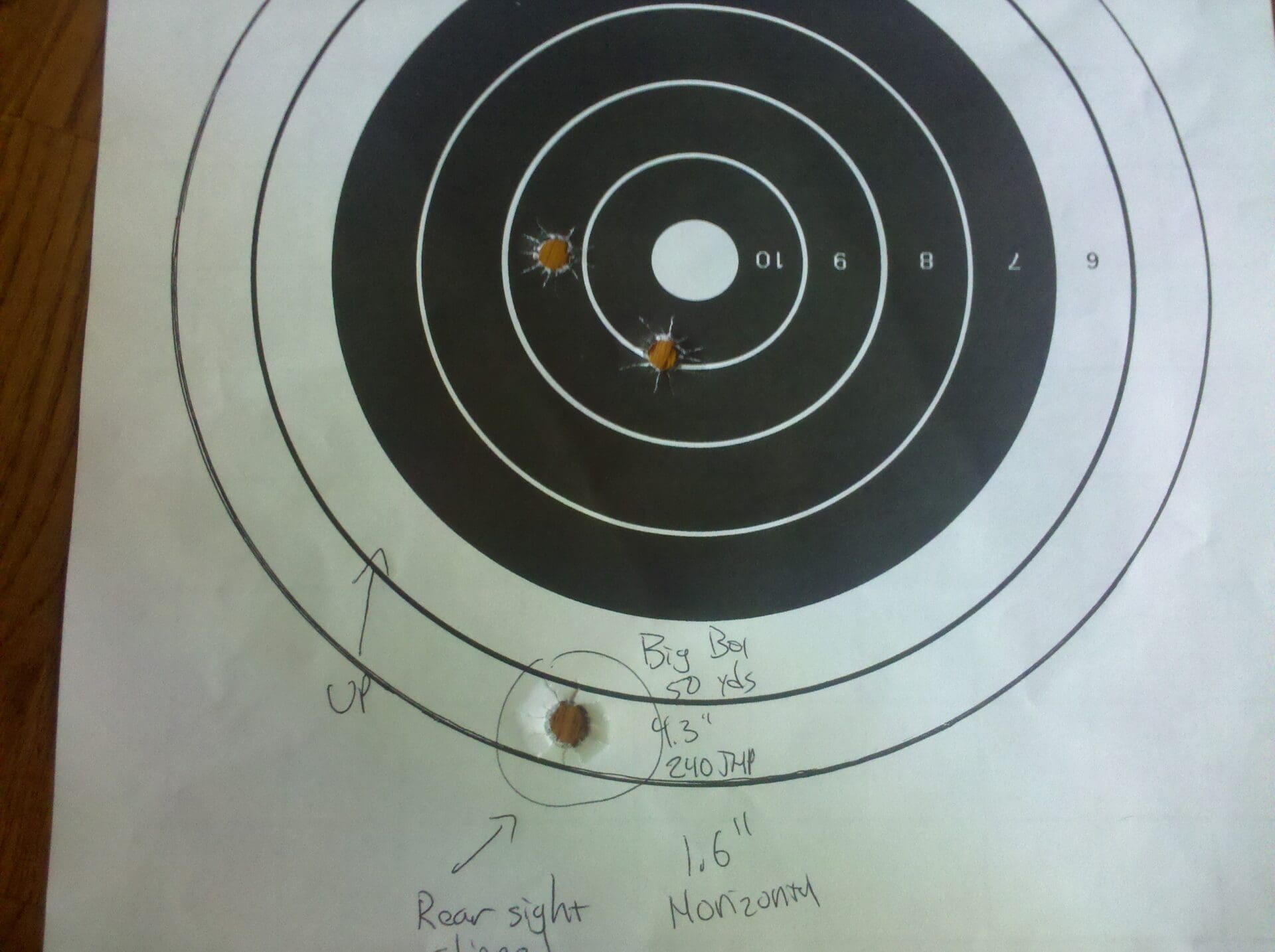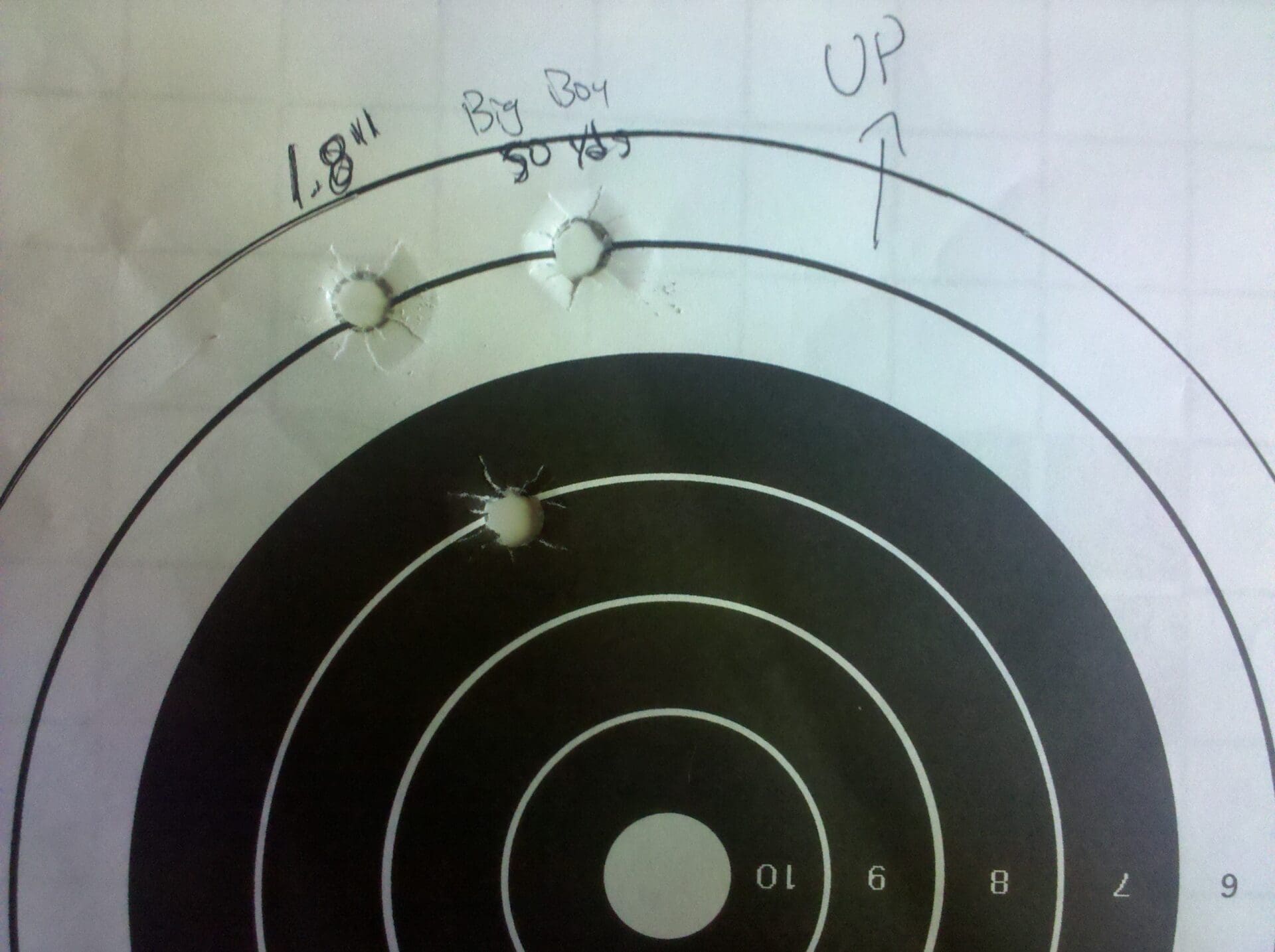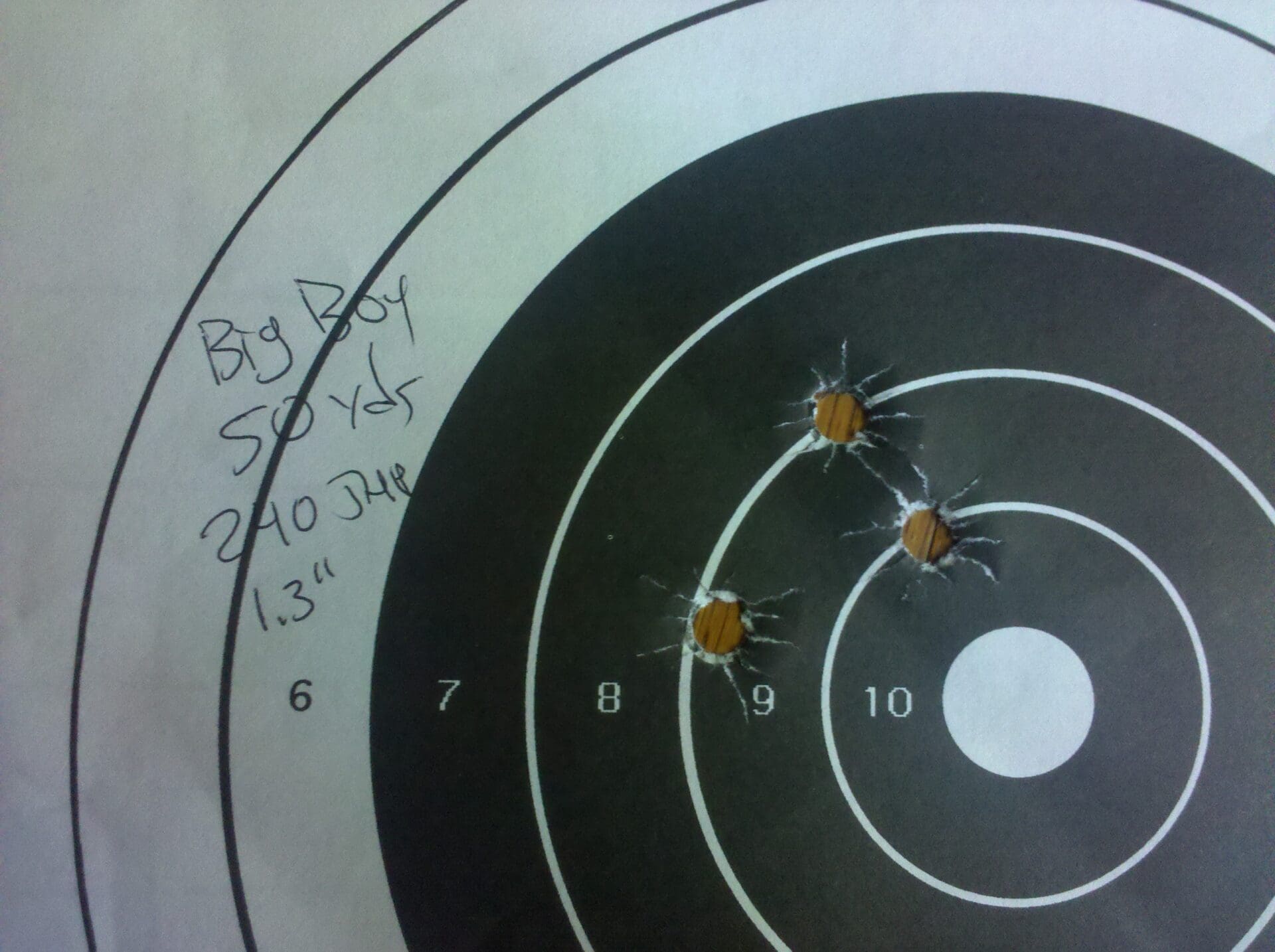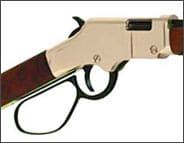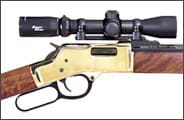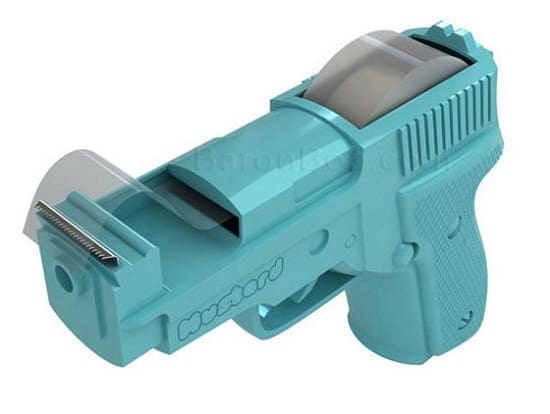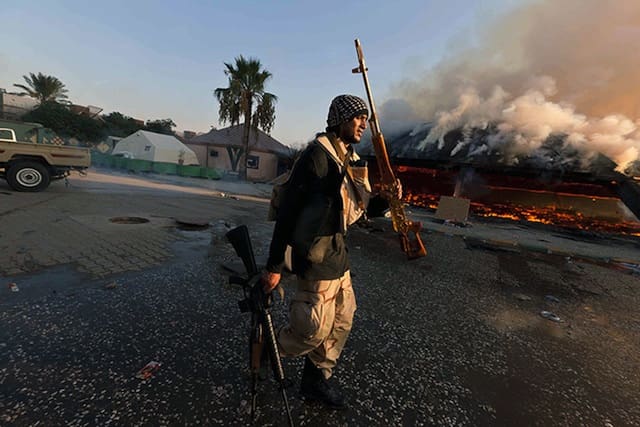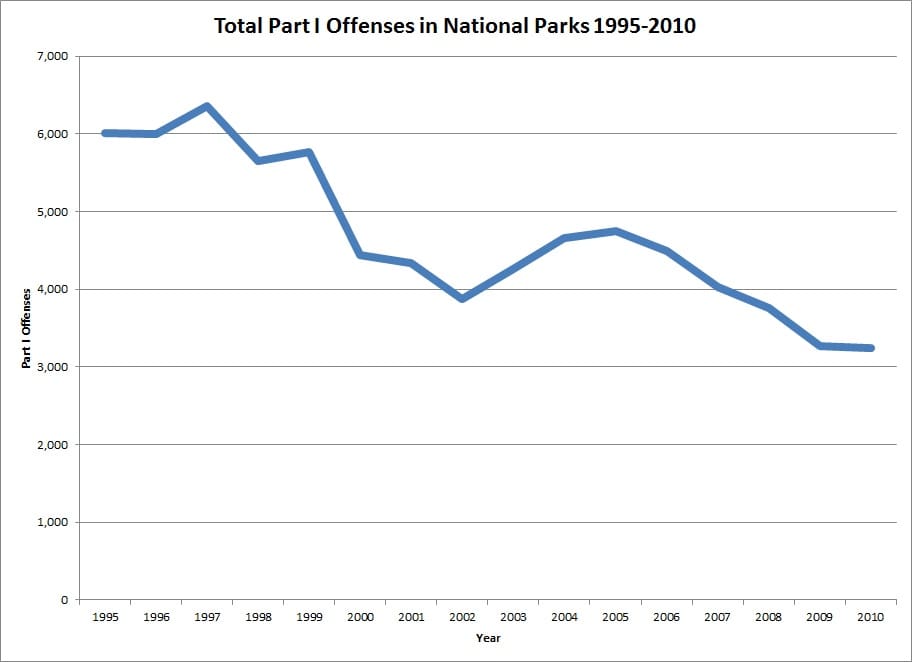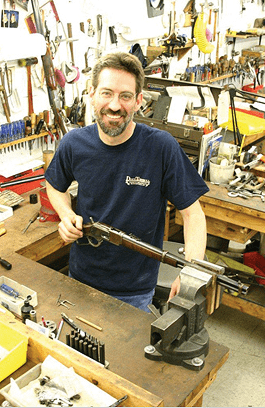Regular readers may notice that I’ve removed the post on FPSRussia’s latest sortie. I’d named the faux Russian our Irresponsible Gun Owner of the Day. Again. Still. Again. While I’ll never say never again (being a Jewish James Bond), I reckon that’s it. Kyle and I are done. Several members of our Armed Intelligentsia rightly pointed out that TTAG’s FPS coverage put us on the onramp to rutland. Message received. Even as TTAG approaches its second birthday, even as our firearms-related recipe racks up over 300k unique viewers per month, I am fully committed to keeping the site funky fresh—without losing what’s good and true and right and proper and all that. To that end, here’s some of what’s coming down the proverbial pike . . .
Irresponsible Gun Owner(s) of the Day: Libyan “Freedom Fighters”

Leave it to that Newton guy. Thanks to him, we recognize the inevitability of that whole “what goes up, must come down” thing. And when it comes to small pieces of lead that are projected out of a rifle or handgun into the air, when what went up comes down, it can come down with enough speed/force/mass to kill. But that’s not likely to stop the Libyans, Rebels Without a Clue…
Gun Review: Henry Big Boy Classic Rifle in .44 Magnum
For students of the history and romance of so-called cowboy rifles, Bayonne, New Jersey isn’t a particularly evocative locale. Ilion, New York (Remington). New Haven, Connecticut (Marlin). Those are the places where West-winning long guns were born. Even though the virtues of the long guns made in those storied factories have withstood the test of time, times have changed. I reckon we can add the Hudson County hang to the roll call. For that’s where Henry Repeating Arms Co. makes its lever action rifles, including the .357, .44 and .45 Big Boy . . .
Overview
The Henry Big Boy is a lever-action centerfire rifle with a fully octagonal 20-inch barrel, a solid brass receiver, and a 10-round tubular magazine. It’s a larger version of Henry’s successful Golden Boy rimfire rifles and similar to Henry’s new brass-framed .30/30 rifle. Our test gun was chambered in hard-hitting .44 Magnum.
Despite its name and its stunningly beautiful brass receiver, the Big Boy is not a replica of the original Henry Rifle (a.k.a., “That damned Yankee rifle you can load on Sunday and shoot all week”). The Big Boy’s action is nearly identical in operation to that of the venerable Marlin 336. Henry’s version has a solid receiver and a round bolt with one rear locking lug. Unlike the 336’s receiver-based loading gate, the Big Boy reloads through a port in the front of the magazine tube (after removing the magazine plunger).
Dropping cartridges down a tube isn’t the handiest way to load a rifle, although it can be less painful than getting your fingers jammed in the loading gate of a Marlin or Winchester design. It won’t matter for hunting; if your deer (or elk or moose or whatever) isn’t down after ten rounds of .44 Magnum you need to give up hunting and take up Contract Bridge.
Reloading the Henry in a high-stress or situation is as practical a proposition as a kickstand on an Abrams tank. And? While I doubt owners would use their Big Boy .44 for defensive purposes, the rifle’s magazine capacity, decisive ballistics and quick action would make it a fearsome home defense weapon—at least until it ran empty.
Owners of tubular-magazine Marlin .22 rifles will be familiar with the hazards of trying to empty unfired rounds by dumping them out the end of the tube. It’s a lot more fun to keep shooting until the gun runs empty. Unless you’re a handloader you’ll probably want to restrain yourself. At about $.80 a round, factory .44 Magnum ammo is about the same price as .30/30 or bulk .308.
The Big Boy has no manual safety of any kind. Henry’s lawyers must have gone into convulsions when company president Anthony Imperato made the call; this ballistics-crazed brief gives the decision two big thumbs-up. There’s no half-cock notch. But there are two passive safeties: a trigger block prevents the gun from firing unless the lever and bolt are fully closed and locked, and a transfer bar passive safety allows the rifle to be carried safely with the hammer down on a live round.
A Brass Receiver? Really?
Yep. Really. Well, sort of. The Big Boy’s receiver is machined from a solid lump of a proprietary brass alloy. Henry claims it has the same tensile and yield strength as steel. Despite some speculation in the gun forums (fora?) about the strength and durability of the non-steel receiver, my search for “Big Boy Frame Failure” didn’t turn up a single complaint.
As you can see from the picture below, the Big Boy’s receiver is massively thick. Company president Anthony Imperato states that the Big Boy can handle any loadings within the SAAMI pressure limit (36,000 PSI for the .44 Magnum). If you’re a glutton for shooting expensive ammo, Buffalo Bore makes Big Boy-safe .44 Magnums that deliver nearly 2,000 lb-ft of muzzle energy. That said, their very heaviest .44s are not recommended; the slow-twist barrel may not properly stabilize the heaviest .44 Magnum bullets. But the Big Boy [reportedly] does fine with bullets up to and including 270 grains.
Fit and Finish
Shooting this rifle is a thrill and a joy, but those who appreciate quality will get a different kind of thrill from just handling and touching it. It’s a perfect composition in steel, brass and walnut.
The fit, finish and assembly of the Big Boy is equal or superior to that of any factory-made firearm I’ve ever handled. Period. The full octagon 20-inch barrel is blued in a deep, lustrous black that I’ve only found on handcrafted classics from the pinnacle of American gunmaking: pre-’64 Winchester Model 70s, 1960s Remington Model 700 BDLs, and 1960s Smith & Wesson revolvers.
From its polished brass buttplate to its Hawken-style muzzle, this rifle radiates quality and attention to detail in both design and execution. Heaven is in the details; the machined steel rear sight from Marble Arms (the devil is there, too) and the gold, antique-typeface barrel markings; the perfectly-machined octagon barrel; the solid-brass magazine plunger with its captive steel follower. And that’s just the metalwork: the woodwork is equally stunning.
Both the buttstock and fore-end are cut from lightly figured American walnut with an incredibly smooth satin finish. Wood-to-metal fit is outstanding all around. The rifle’s original stock cracked at the wrist after the rifle took an unintentional tumble (Farago almost cried). Henry sent us a replacement stock set. Although they were made months apart from each other, the new stock slipped onto the receiver tang as snugly and neatly as if the pair had been hand-fitted together. That, dear readers, is quality control. Other gunmakers (cough Marlin cough) would do well to emulate it.
You won’t see me trying to cram any business cards between the wrist and the receiver flat, but you can make out a Van Eyck-esque distorted reflection of my hands and camera as I took the picture.
Accuracy
I took the Big Boy to my grandparents’ old family farm outside Kalispell, Montana with the hopes of shooting it extensively in a beautiful, private location at ranges of 100 yards and beyond. A half-dozen pastured horses prevented me shooting at more than 35 yards. Even so, my results at that modest range were astounding. To me, at least.
My eyesight is no longer correctable to 20/20. As a result, I generally shoot like crap with iron sights at anything other than short ranges. I knelt in the dirt behind a folding table and squinted through the Big Boy’s buckhorn rear sight while shooting the groups above. My first three shots from the Big Boy went into the lower cloverleaf on the target above, and the second three shots went into the upper cloverleaf. In each group, the center-to-center distance is slightly less than 0.5 inches.
When I got home, I took the Big Boy to my local range for some proper bench testing at longer ranges. My dodgy eyesight began to tell. My wonderful cloverleaf groups disappeared. I also discovered that our sample Big Boy has a problem which seriously impairs its practical accuracy: the Marble rear sight rides too loosely on its elevation ramp.
Under recoil, the ramp slides loose and the sight drops down to its lowest position. ometimes it lowers itself one notch at a time, and sometimes it just drops all the way. The result is pronounced vertical stringing like this:
And this:
When the rear sight stayed in place for three shots (or when I noticed it had slipped and reset it) my groups consistently looked much better, as this shows:
And this:
All of the groups were centered horizontally about 1.25 inches left of the bull at 50 yards; once the elevation ramp issue is addressed, I’ll drift the rear sight a hair to the right.
Including the wandering rear sight, at 50 yards my groups averaged exactly 2.5 inches, even including one really bad shot I knew I yanked three inches off to the left. This average is actually pretty damned good for me with iron sights. But it doesn’t reflect what the gun’s capabilities of a stable rear sight and 20/20 vision. Or a scope.
When I statistically ‘correct’ for the loose rear sight by measuring only the horizontal width of the groups (which were extremely consistent except for that one blown shot) we get a better picture of how well your humble correspondent could shoot the Henry Big Boy .44: 1.25 inches at 50 yards.
At 100 yards I’m usually a basket case with iron sights; I can empty a National Match Garand into a CMP target and only land thee shots on the black. The loose rear sight caused even more pronounced vertical stringing. My groups ranged from 2.4 to 6.5 inches. Removing the vertical deviation, my groups were between 0.75 inches and 1.5 inches wide, and centered about three inches left of the bull.
Lacking the precision that only a scope (or better eyes and a precision aperture sight) can provide, I can only estimate at the Henry Big Boy’s potential accuracy. I figure it would shoot 2 MOA or better, as long as the shooter remembers the football-like trajectory of the .44 Magnum.
Functioning And Handling
We don’t really have a ‘testing protocol’ here at TTAG. Every type of gun suggests a different set of testing priorities. It’s cheap, fun and entirely practical to run 1000 rounds through a semi-automatic .22 rimfire during testing. A 600-round AR-15 test takes a lot of planning and resources. Test-firing 100 rounds of .338 Lapua or .375 H&H (yes, we’re working on those) will leave you bloody, bruised and bankrupt.
The price of .44 Magnum ammunition put some limitations on the quantities of ammo we could afford to run through the Big Boy compared to other pistol calibers. After about 30 rounds, I experienced a single malfunction: the lever screw loosened itself. The rifle seemed to seize up; it wouldn’t cycle fully after about 30 rounds. When I jiggled the lever slightly and tightened the screw with my fingernail the gun resumed full function. A drop of blue Loctite (not the permanent red stuff) will prevent this from happening again.
Brass is a fairly soft metal which glides smoothly over many other metals. This makes it an excellent material for cartridge cases and bullet jackets. It also gives brass-framed rifles a smoothness of action that’s difficult to achieve when steel rubs against steel. The Big Boy’s lever is slicker than a buttered Benelli. The trigger breaks very cleanly at slightly over four pounds. Our Marlin 1894C had to take an Alaskan summer vacation, courtesy of Wild West Guns before it felt as slick as the Big Boy felt straight out of the box.
When it comes to handling, the .44 Magnum Big Boy teaches you very quickly how it earned its name. At eight pounds, 11 ounces it’s as heavy as my .357 Magnum Marlin 1894C and my S&W Model 686 together. It’s heavy enough that you’d think twice before carrying it up a mountain in search of elk or deer. And by ‘carry’ I mean carry: the Big Boy has no sling attachment points. I’d slit my wrists before I’d let a gunsmith drill into the almost presentation-grade walnut of the Big Boy’s stock and fore-end.
Leaving it behind would be a mistake, however. Those extra pounds mean the Big Boy lacks the marvelously quick handling of a smaller, shorter carbine like the .357 Magnum Marlin 1894C. But in offhand firing the Big Boy’s gravity suck soaks up the recoil of the .44 Magnum. Much of the Big Boy’s weight is carried in its octagon barrel, which makes it very steady on target.
And this all works for me. The .44 Magnum Big Boy isn’t a pistol-caliber carbine; it doesn’t need to handle like one. It’s a man’s rifle with nearly the power of a .45-70. I wouldn’t use the Henry Bog Boy .44 to snipe elk across a canyon. It wouldn’t be a prudent choice for stalking brown bear. But big .44 (or .45) bullets at moderate velocities have an almost mythical reputation for dropping all but the biggest game dead in their tracks. Within 150 yards, that game is going down.
I was surprised at the recoil I felt from the Big Boy’s .44 Magnum cartridge, however. When firing offhand it’s hardly noticeable. From a bench (where I spent most of my time) it is surprisingly sharp. By the end of my range day I sported a nice bruise on my right shoulder. I wished I’d followed my uncle’s sage advice to use a Limb-Saver recoil shield.
Accessories
In terms of customization, the Big Boy is a rather unique case. Almost anything you do to modify it will ruin its classic styling. Karma will punish you with a merciless kick to the groin if you desecrate your Big Boy with a bipod, tactical light, or tri-rail scope mount. The horror! And you’d better not have your gunsmith drill into the brass receiver to mount scope rings, because the tiny screws will strip out the softer brass in no time.
However, there are a few mods you can make to your Big Boy without completely spoiling it. The Henry website sells factory-custom big loop levers and cantilever scope mounts for a ridiculously affordable $50 and $27.50, respectively. And if you happen to bend or break your brass magazine plunger assembly, they’ll replace it for an unbelievable $21.50.
If Henry recoups their production costs at these prices, it shows that they’ve really got their manufacturing down to a science. And if they can’t recoup their costs and they’re willing to take a small loss to keep their customers happy that’s pretty neat too.
In fact, the only ‘expensive’ Henry factory accessory is the one I’d want the most: the walnut wall-mounted display case for $150.
Born In The USA. Completely.
Unlike many modern guns, all Henry rifles are manufactured and assembled domestically, using parts and materials sourced entirely in the USA. The brass receivers are cast and machined in Pennsylvania. The walnut stock blanks come from Missouri, Iowa and Kansas. The bolt steel comes from Pittsburgh. And the barrel steel is forged in Ohio.
I point this out because the lever-action is the quintessential American rifle, but few of them are still made in America. Browning BLRs and Winchester 1894s are made in Japan, Cimarron rifles are imported from Italy, and of course Rossis are built in Brazil. Marlin used to make their rifles in North Haven, Connecticut, but now of course they’re not making them at all. For a while anyway.
Conclusion
Farago and I haven’t been shy in chronicling the shortcomings of Marlin and their 1894C carbines. While testing the Henry Big Boy and writing this review, I inevitably found myself comparing the two. It’s been a challenge to try and evaluate the Henry on its own merits. It’s important because this article is not about Marlin. It’s about the rifle that’s going to eat Marlin’s lunch.
This is a rifle you’ll leave to your children, but not until you’ve hung it over your mantel (spouse willing) for a few decades because your friends and neighbors—-shooters, hunters and anti’s alike—will gaze at it thinking goddamn, that’s one beautiful rifle.
Whether shooting or sitting still, Henry’s Big Boy is a breathtaking exemplar of classic rifle styling and craftsmanship. It’s a man-sized rifle that (with the rear sight fixed) delivers solid accuracy and sledgehammer-like knockdown power for hunting just about anything within 150 yards. It’s also an awesomely fun (if expensive) recreational plinker: if you hit an empty soup can right on its bottom rim in the dirt that 240-grain bullet will send it into Near Earth Orbit.
In fact, the Big Boy’s beauty is its only real drawback. It’s so lovely I’d feel like a criminal the first time I put a ding in the stock or a big scratch in the receiver flat. [ED: Tell me about it.] Cleaning the Henry Big Boy takes longer than most rifles; most rifles don’t beg you for a final polish with Brasso after you’ve wiped off the soot and fingerprints. A task which is more of an honor than a chore.
Yeah, it’s that good.
SPECIFICATIONS: Henry Big Boy Classic Rifle
Caliber: .44 Magnum/.44 Special
Barrel: 20 inch full-octagon, 1 in 38 inch twist
Overall Length: 38.5 inches
Weight: 8 pounds, 11 ounces
Action: Lever-action, tubular magazine, external hammer w/transfer bar passive safety
Finish: Polished brass, blued steel, walnut
Capacity: 10 (.44 Magnum), 11 (.44 Special)
Price: MSRP $972 (about $650 street)
RATINGS (out of five)
Accuracy: * * * 1/2
Cloverleaf groups at 35 yards are awesome; a wandering rear sight is not. Four stars when it’s fixed, and possibly even more stars with a scope. We’ll keep you posted.
Ergonomics: * * * *
Excellent trigger, extremely smooth action and light recoil (when you’re firing offhand) with big-game ballistics. Although historically and aesthetically correct, subtract one star for the optically challenging iron sights and the lovely but slippery brass buttstock.
Reliability: * * * *
You don’t want a seized-up lever when that moose is in your sights, so don’t forget to Loctite the lever screw.
Customize This: * *
This gun is already pretty well customized. Scope it for medium-range precision and customize it with a big loop lever from the factory if you want to. I’m not sure how to put a sling on it.
Overall Rating: * * * * 1/2
Stunning beauty and craftsmanship in a fun, hard-hitting rifle that will last for generations.
ATF IDs $59,625 in Potential Red Tape Savings
And so the President named Obama instructed the vast, multi-headed beast that is the federal government to re-examine the regulations and red tape bedeviling American companies and recommend changes which would deliver unto Him credibility-saving savings. And lo, one of the anointed thirty federal departments and agencies, the Department of Justice, instructed the Bureau of Alcohol, Tobacco, Firearms and Explosives (and Really Big Fires) to see what rules it could change to help the cause of non-crony capitalism. (This even as the ATF seeketh implementation of a new executive order increasing the bureaucratic burden on 8500 American gun dealers.) Hark! The ATF hath found a way to further the Commander-in-Chief’s desire to liberate America’s entrepreneurial spirit from the the yoke of federal bureaucracy. legaltimes.typepad.com reporteth . . .
Incendiary Image of the Day: Libya’s Man with the Golden Gun
Pardon me if I don’t raise my glass to the U.S.-supported rebels who’ve ousted Muammar Gaddafi. Quite aside from the unconstitutionality of a U.S. president committing American military forces to a foreign conflict without Congressional approval, history tells us that the aftermath of a brutal dictatorship isn’t all unicorns and rainbows. Factions jostle for power with lawless brutality and . . . that’s about it. According to guardian.co.uk, the Libyan “rebel” above is emerging from Gaddafi’s redoubt with a “golden gun.” For me, nothing symbolizes criminality more than the bilious ballistic baubles favored by narco-terrorists and despots. And nothing better captures the spirit of “rebel fighters” than an image of one looting a golden rifle. Still, it looks better in his hands than the man who took down a 747 carrying hundreds of innocent civilians. Lest we forget.
Self-Defense Tip: Three Things to Do Before You Die
http://www.youtube.com/watch?v=K0UzG-Gc7II
Confession: this isn’t a self-defense tip per se. This post assumes you weren’t able to use your gun to successfully defend your life. Not to put to fine a point on it, you’re toast. A dead defender walking. A wounded, soon-to-be ex-member of TTAG’s Armed Intelligentsia. It probably wasn’t your fault. As I pointed out in a previous post, you can do everything right in a gunfight and still die. You can be out-gunned, out-maneuvered or blind-sided. Lady Luck may be diverting to voice mail. You-know-what happens. Deal with it. That’s right: you’re about to die and you still have work to do. (You can sleep when you’re dead.) Here are three things you should do before you shuffle off this mortal coil . . .
Home Invaders Choose Poorly, Repelled By 72 Year Old
It’s been a good week for seniors. First a 92-year-old woman from Wales provided a sliver of hope that the UK isn’t a total loss. At least not yet. And over here a 72-year-old Reno resident stopped not one, not two but three home invaders. How, you ask, did an elderly man who walks with a cane hold off three burly burglars in the middle of the night all by himself? He did it with a handgun he keeps by his bed for self defense. But you probably knew that…
National Parks No Less Safe with Legal Concealed Carry
In early 2010, National Parks opened their doors to those carrying concealed firearms. Naturally, the Brady Campaign went nuts and started prognosticating about the trees of liberty being refreshed with not so metaphorical blood of patriots. Now, over one year later, a Freedom of Information Act request submitted by Herschel Smith has the hard and fast facts about reported crimes in our nation’s parks. And I have to say, the numbers don’t look good for the Brady bunch.
New York Realizes Gun Businesses Mean Jobs, Tax Revenue
Wait, you mean firearm manufacturing and related firms are actually good for a state’s economy? They provide real jobs and tax revenues? Shazam! Coming a little late to the party is the state of New York. Brian Kolb, the Assembly minority leader and Tom King, head of the NY State Rifle and Pistol Association are leading a push to try to counter efforts by other states to entice some or all of New York’s firearms industry to move to friendlier climes. Firms like Remington, Kimber, Kahr, Turnbull and Dan Wesson along with ancillary companies mean 10,000 jobs for the Empire State which needs every private sector job and samolian it can scrounge. To wit…
Question of the Day: What’s Worse for Accuracy: An Earthquake or a Tornado?
I was on the range when the quake hit. A bit of rumbling and shaking. Threw off my aim something chronic. Still, it wasn’t a tornado. Then again, tornados are a bit more selective. Hmmm.
Memo to Dennis Henigan: Safer World Without Guns? Prove It
The Brady Campaign to Prevent Gun Violence is a day (or two) late and a few brain cells late to a major gun-related news story. Writing for yesterday’s opposingviews.com, Dennis Henigan excoriated Senator Coburn for joking about carrying a gun on Capitol Hill, referencing the possibility that presidential candidate Rick Perry might have a CCW. Why not let pols pack heat? “It is the same reason that our national parks are less safe because (due to legislation sponsored by Senator Coburn himself) concealed carry of weapons is now permitted within their borders . . .
ATF Death Watch 62: Chaos vs. Control
The ATF operation that supplied Mexican drug cartel members with weapons from American gun stores was designed to . . . supply Mexican drug cartel members with weapons from American gun stores. I guess that’s a little too obvious for the mainstream media. The alphabet soup of federal agencies that helped run Operation Fast and Furious have perpetuated a less politically dangerous analysis: Uncle Sam’s gun smuggling program was a “botched sting.” This characterization ignores the fact that A) the traffic was exclusive to Mexico’s Sinaloa drug cartel and B) the ATF failed to arrest a single “big fish” during the 10-month, two-thousand-guns-plus program. What’s more, the ATF’s previous anti-gun running program wasn’t broken and Fast and Furious couldn’t fix it . . .









